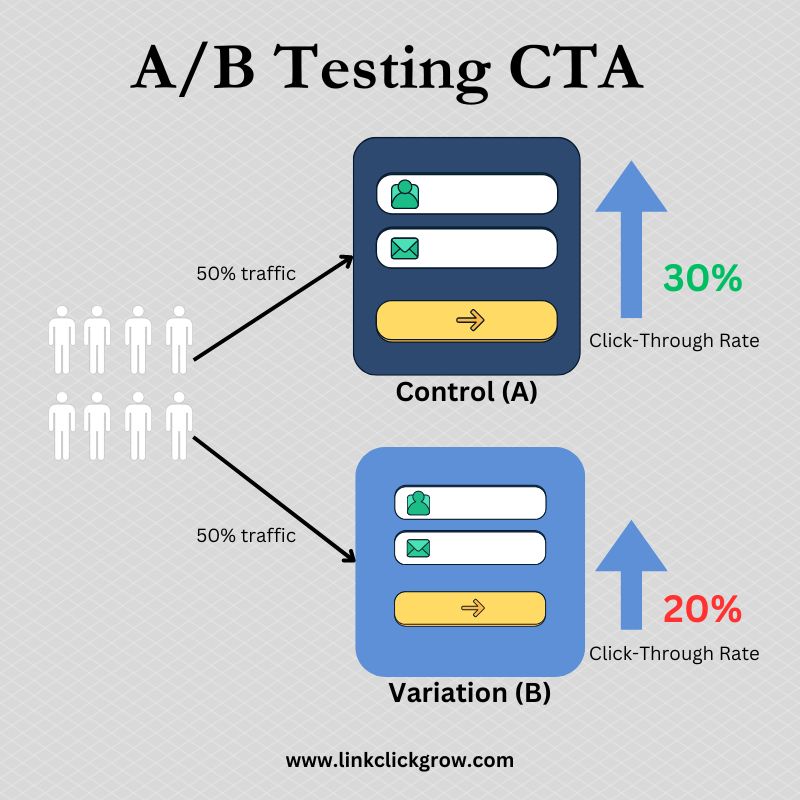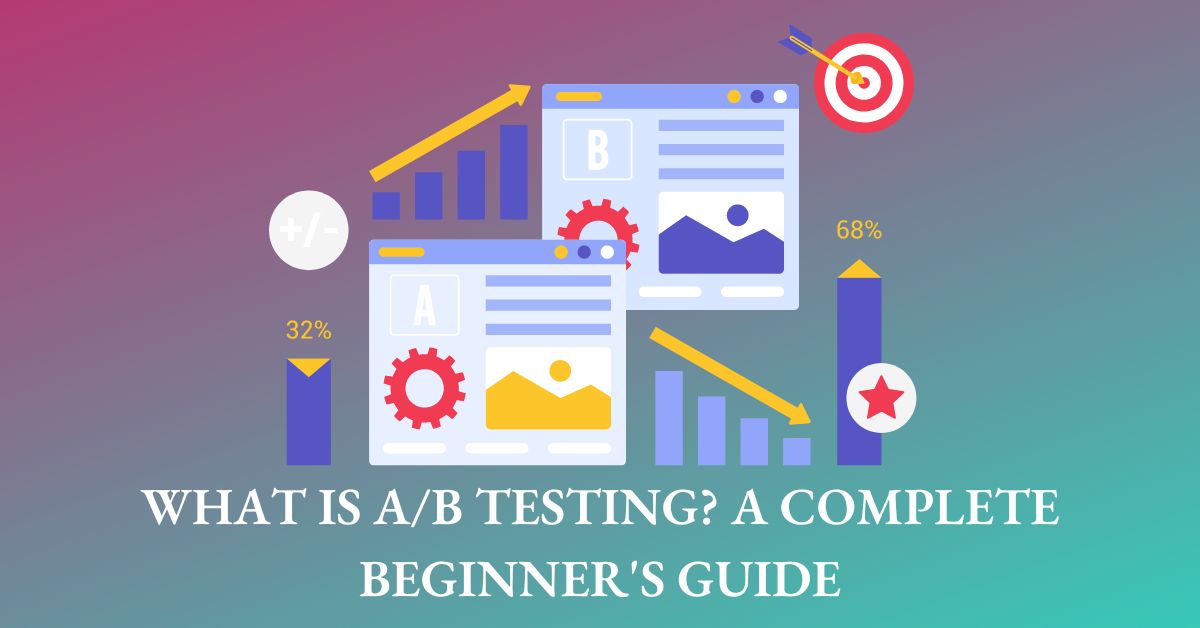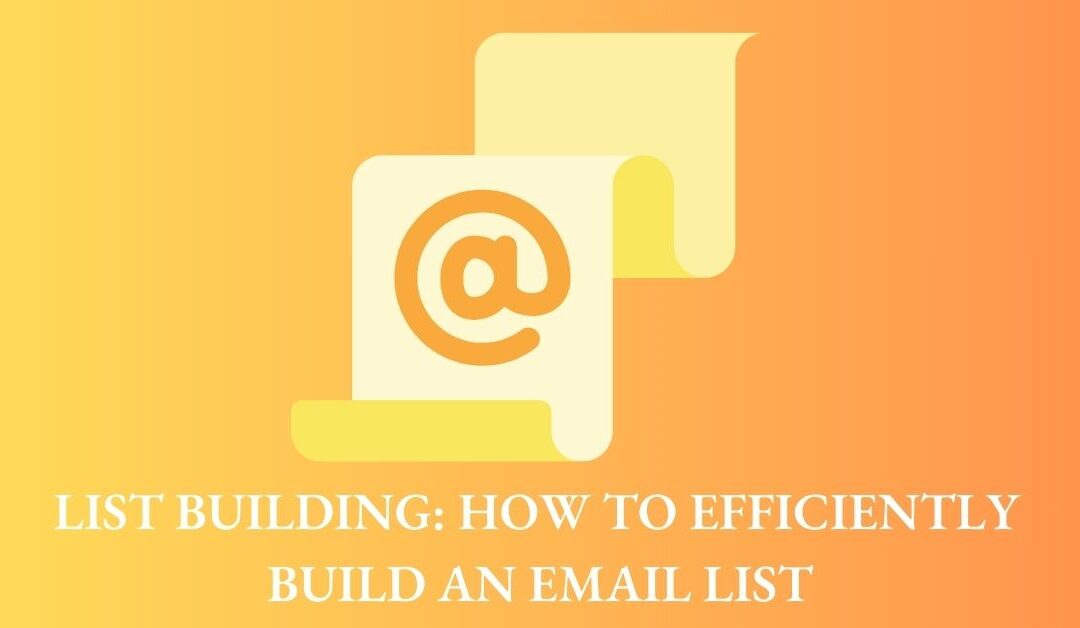We often hear about best practices when it comes to marketing strategy. However, what works best for one business may not work for another. Therefore, the best way to optimize marketing strategy is to conduct tests and improve accordingly. A/B testing is a strategy in which you conduct experiments to determine what works better for your target audience.
In this post, I will discuss A/B testing, how it can benefit your business, and how it works.
What is A/B Testing?
A/B or split testing, is an experimental process in which you test two variations of an element, such as an email, a landing page, or an advertisement, to determine which performs better. It is a marketing strategy that relies on data to make decisions. For example, you can try two subject lines to determine which leads to a higher email open rate.
A/B testing helps optimize websites and marketing campaigns through informed decisions. It eliminates the guesswork and focuses on the target audience’s behavior.
You can A/B test anything from a website or email campaign to individual elements such as a call-to-action, an image, or a pop-up.
In A/B testing, two versions of an element are presented to two random groups of audiences. The original version already in use is referred to as ‘control’ or ‘A’, while the modified version is known as ‘variation’ or ‘B’. You can determine which version better serves the marketing goals based on the results.

Popular email marketing tools such as ActiveCampaign, Getresponse, Brevo (formerly Sendinblue), ConvertKit, AWeber, and Constant Contact come with an A/B testing feature. You can use these tools to A/B test your marketing campaigns quickly and conveniently.
Why A/B Testing Is Beneficial?
A/B testing aims to provide insight into user behavior, which is critical for achieving any marketing goal. Whether you are struggling with acquiring new leads or dealing with a high cart abandonment rate, learning user behavior can help you overcome any marketing obstacle.
The following are a few benefits you can achieve with A/B testing:
Understand Your Audience
Understanding your target audience is crucial to satisfying their needs. The visitors come to your website for a reason, and if your site does not serve that purpose, you will lose potential customers. Testing multiple versions of an element enables you to understand your target audience’s concerns, demands, and expectations.
For example, you can try different headlines, titles, and email subject lines to discover what your target audience expects from you.
Reduction in Bounce Rate
There can be many reasons behind visitors leaving your site. It could be poor navigation, the color scheme, inappropriate fonts, or the featured images. A/B testing these elements can help you optimize your website for a better user experience, reducing bounce rate. For example, you can try different fonts or images to see which version tends to improve bounce rate.
Increase in Website Traffic
A/B testing is helpful for both organic traffic and paid ad traffic. You can test different titles and Meta descriptions for organic traffic to discover what leads to a higher click-through rate. Similarly, for pay-per-click ads, you can A/B test the headline, the body text, the link, and the keywords the ad displays to boost the click-through rate.
Increase in Conversion Rates
Acquiring new customers is often more expensive than converting existing customers. Many factors can impact the conversion rate, such as hard-to-find CTA. Another factor that can affect the conversion rate is a lower subscription rate. A/B test can help you find the ideal CTA and subscription box location. Additionally, you can also A/B test email campaigns to increase conversion rate.
Reduction in Cart Abandonment Rate
A vast number of customers leave websites with items in their shopping carts. The top reasons behind cart abandonment include:
- The checkout process is complicated.
- Checkout page design raises security concerns.
- Prices are not displayed in local currency.
- The refund or return policy is not clear.
- Limited payment methods.
With A/B testing, you can try variations of checkout page design, product images, payment methods, etc., to lower the abandonment rate. You can also try email campaign variations to remind customers to complete their purchases.
Low-Risk Modifications
One of the most significant benefits of A/B Testing is low-risk modifications. Websites often change, and those changes always carry a risk of failure. You can only guess how your audience will react to the new version. However, split testing helps you implement changes only after their usefulness is proven. As a result, the optimizations carry low risk.
Top Elements You Can A/B Test
Headlines
Headlines create the first impression of your webpage. A visitor may continue reading or leave the page based on the headline. A good headline is:
- Short: Ideally, a headline must be at most 60 characters.
- Catchy: It must attract readers and entice curiosity to read further.
- Unique: It must be different than the others.
- Relevant to the content: It should reflect what your content is about.
You can A/B test different headline text, font, size, and colors to determine which version leads to more visits, lower bounce rate, and increased time spent on the page.
Email Subject Lines
The success of email campaigns is heavily dependent on subject lines. Subject lines determine whether the recipient will open your email or ignore it. Ideally, a subject line should be short and catchy. The following are a few ways you can make your subject lines catchy:
- Add humor.
- Entice curiosity.
- Announce an offer.
- Using words that perform like ‘new’, ‘available’, ‘upgrade’, or ‘update’.
However, it is difficult to determine what your target audience might find attractive. Therefore, A/B testing variations of subject lines enable you to craft the ideal subject lines that result in a high email open rate.
Call to Action (CTA)
A good call-to-action can significantly impact your conversion rate. CTAs encourage visitors to take action, like subscribe to a newsletter, make a purchase, or click on a link. They can appear in the form of a link or a button. A/B testing CTAs can help determine the ideal placement, font, size, color scheme, and action text that results in more conversions.
Navigation
Navigation and layout play a significant role in user experience. An easy-to-navigate site has a lower bounce rate and results in more page views. On the contrary, visitors who cannot easily find the desired information will likely leave the site immediately, increasing the bounce rate.
For an ideal user experience, you must choose the placement of the navigational menu, place similar content under one category, and use the appropriate font size, color, and style for the menu items.
For example, you can A/B test navigation menu placement, i.e., horizontal and vertical menus, to see what works best for your audience.
Content Depth
The ideal content depth depends on several factors, including your niche, business, and audience demographics. However, you can only learn about the correct content depth if you do A/B testing. With split testing, you can determine whether your audience wants content covering every aspect of the topic in depth or prefers short form.
For example, you can create two pieces of content on the same topic and see which has a lower bounce rate and higher time spent on the page.
Social Proof
Most customers look for reviews or recommendations before buying a product. They need proof that your product or service has helped others. Social proof is evidence from a third party that they have purchased your product or service and found it helpful. It influences the buying decisions of customers and helps increase sales.
The following are a few examples of social proof:
- Awards and badges
- Certifications
- Social share count
- Reviews
- Testimonials
- Celebrity endorsement
Many factors contribute to the effectiveness of social proof, such as the format, writing style, and location. Therefore, you can use A/B testing to determine how to make the most of them.
7 Simple Steps of A/B Testing Process
Step 1: Research
The first step to A/B testing is researching and looking for improvement opportunities. However, you can find improvement opportunities only by analyzing your current performance. I recommend using tools like Google Analytics and SEMrush to discover high-performing and under-performing pages. Underperforming pages are those that need improvement, while high-performing pages help you in creating a variation.
The following are a few performance metrics you may consider:
- Page views.
- Average time spent on page.
- Bounce rate.
You can use heatmaps tools like Hotjar and Smartlook to understand user behavior. Heatmaps give insight into how users interact with your pages, like how far they scroll, which elements they ignore, and where they click. Heatmaps help identify under-performing elements such as CTAs and sign-up forms.
Similarly, you can identify email campaigns that failed to deliver goals. Top email marketing tools, such as ActiveCampaign, Getresponse, Brevo (formerly Sendinblue), ConvertKit, AWeber, and Constant Contact, enable you to track campaigns. You can identify under and high-performing campaigns based on metrics such as email open rate.
Step 2: Identify the Variable and Set Hypothesis
Now that you have identified the improvement opportunities, the second step is identifying the variable and setting goals. For example, if you observe all high-performing email campaigns contain first names in their subject lines, you can choose the subject line as a variable.
Remember to choose one variable at a time. You may not interpret results accurately if you select multiple variables for A/B testing. Numerous variables make it difficult to understand which variable contributed to the performance.
After choosing the variable, you must set a hypothesis, as A/B testing is about validating or invalidating the hypothesis. For example, if your variable is the subject line, your hypothesis could be “personalized subject lines have a higher open rate than those without the first name”.
Step 3: Set a Goal
The next step is setting up a goal for A/B testing. You may choose more than one metric to assess the results of A/B testing. However, I suggest focusing only on one metric for better decision-making. For example, consider email open rate if you are testing subject lines. Similarly, if you are testing a CTA, your goal should be increased clicks.
Below is a list of metrics you may consider for different broader goals:

Step 4: Select Sample Size or Test Period
There are two ways you can conduct split tests.
Testing two new features: If you are testing two new features simultaneously, you can split your audience randomly into two groups or choose a test period. For example, for email campaigns, you can send variation ‘A’ to one-half of the subscribers while the other half will receive version ‘B’. However, for testing a variation of CTA, you may choose a test period of one month to collect sufficient data.
Testing a variation of an existing element: If you are testing a variation of an existing component, you can choose a test period or a sample size. For example, if you are testing subject line variation, you can select a sample size of 2000 subscribers. In other words, you will compare the email rate for the previous 2000 emails against the new 2000 emails. Similarly, if you are testing a variation in an existing headline, you can compare the click-through rate for 30 days.
Step 5: Create Variations and Run the A/B Test
The next step to A/B testing is to create variation and run the test. Based on the hypothesis, you can create variations of existing elements. For example, if you are testing whether adding a payment method would increase sales and decrease the cart abandonment rate, create a new checkout page with an additional payment method. In this example, the existing checkout page would be the control version, while the new checkout page would be the variation.
However, remember, if you are testing a variation of an existing page, set up a 302 redirect to the current page before presenting your audience with the variation. If you do not set up a 302 direct, two checkout pages will compete against each other.
Step 6: Collect and Analyze Results
After you have run the test for the specified period or on the suggested sample size, you need to analyze how your audience interacted with the variation. Based on the goal, i.e., the primary metric, compare the results of variation against the original version. For example, if your primary metric is email open rate, analyze results to determine if the variation resulted in increased email open rate.
Step 7: Take Action
Results of A/B testing would approve or disapprove your hypothesis. If the variation outperforms the original version, you should replace the original version with the variation. Alternatively, you should continue with the original version if your test rejects the hypothesis. However, if the test result is inconclusive, you can use the insights for future testing.
A/B Testing Best Practices
Run Both Variations Simultaneously
Time often plays a crucial role in marketing campaigns. Some months are known for peak sales, while a few months may suffer from low sales. Similarly, email open rates may be different at different times of the day. Therefore, if you test two variations, you must run them simultaneously. Otherwise, you will not be sure if the performance improvement was due to the change or a different time.
Run Only One A/B Test at a Time
You should run only one A/B test at a time. If you run multiple tests simultaneously, you may not know which test resulted in performance change. For example, if you are testing a CTA that takes visitors to the checkout page while at the same time testing the checkout page, it would be difficult to assess which change increased sales.
Divide Sample Groups Equally and Randomly
If you want to test two variations simultaneously, ensure the sample groups have an equal number of audience selected randomly. A random audience is essential for conclusive and unbiased results.
Run A/B Test Until You Have Substantial Data
You cannot analyze results unless you have significant data. Therefore, it is essential to run the test until you have collected substantial data. The test period depends on how much traffic your website attracts. You can run the test for a shorter period if you generate significant traffic. However, for sites with low traffic volume, you must run the test until a reasonable number of visitors have interacted with the variation.
Conclusion
The success of any business is heavily dependent on the effectiveness of its marketing campaigns. A/B testing is an effective marketing tactic that enables enterprises to improve their marketing efforts by making informed decisions. Therefore, if you still rely on guesses, it is time to run split testing to understand your audience better and present them with elements that will likely boost lead generation.






0 Comments